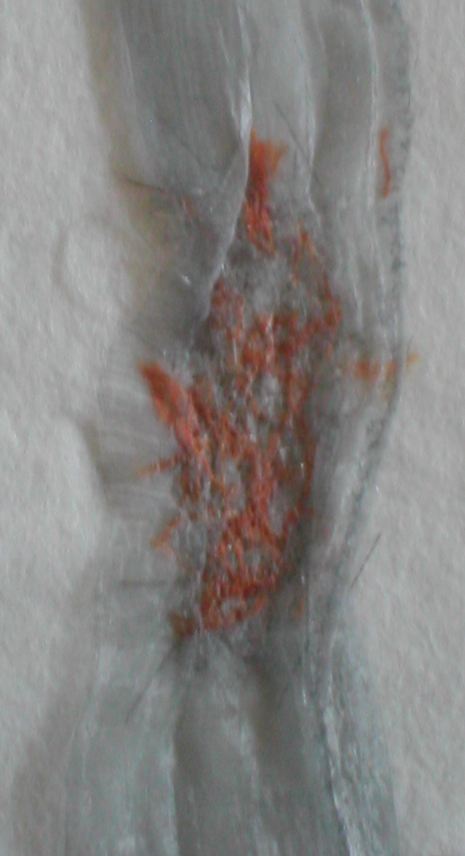
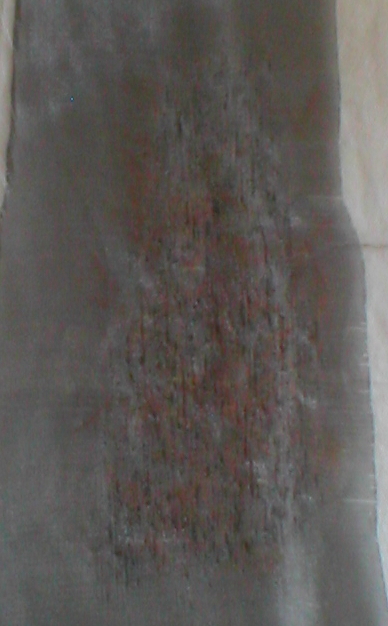
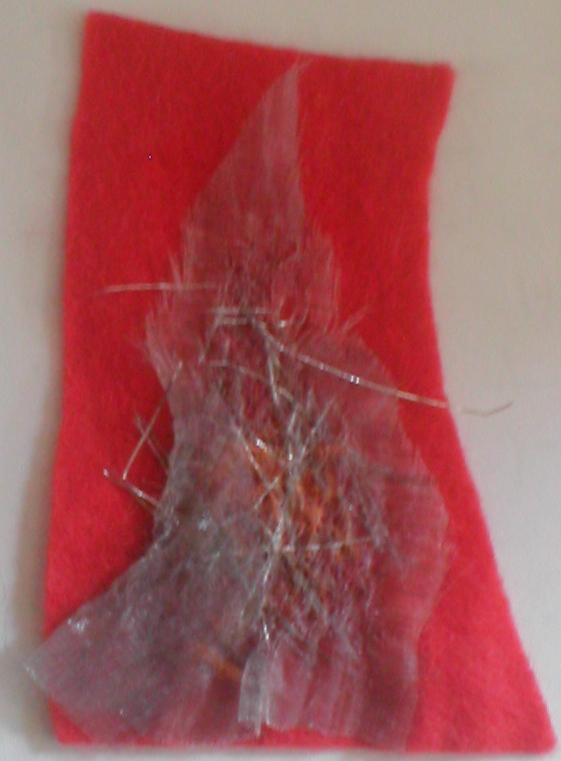
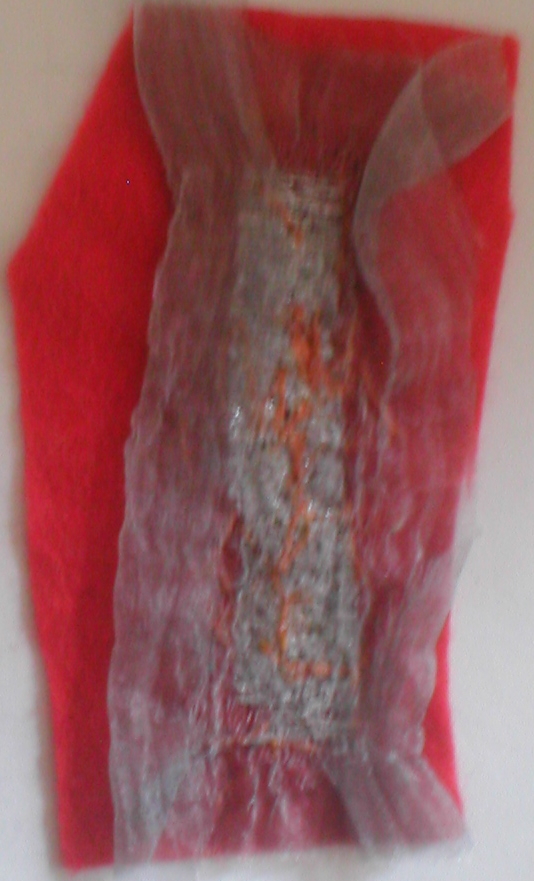
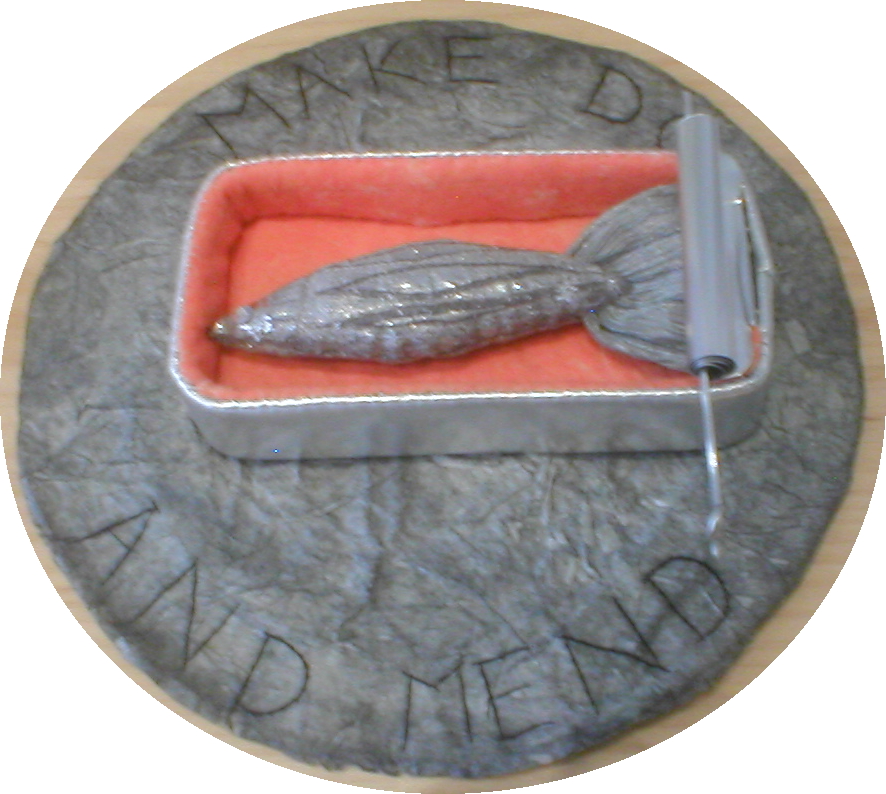
This is another piece 'inspired by' a Warners fabric, in this case 'Chaldea' dating from 1950.
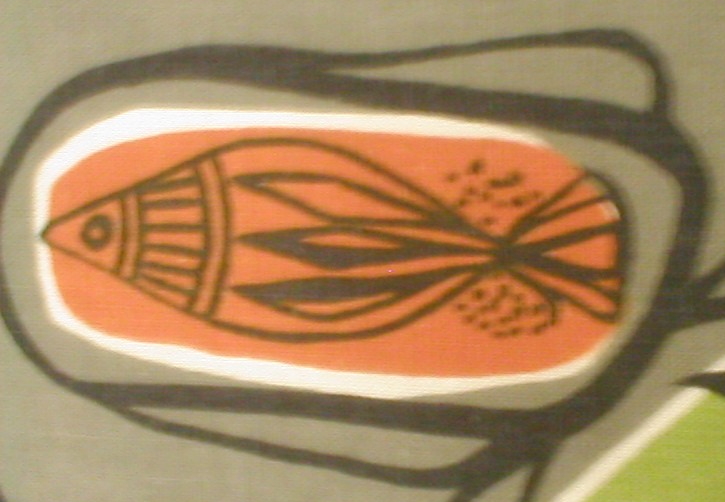
The image of the fish in a roughly rectangular surround made me think of a tin of sardines in tomato sauce, in this colourway of the fabric. But why only one sardine in the tin? In view of the date, the obvious answer is: rationing. My elder sister remembers the first post-war family holiday at a boarding-house in Hastings, where high tea consisted of sardine (singular) on toast. Hence the title.
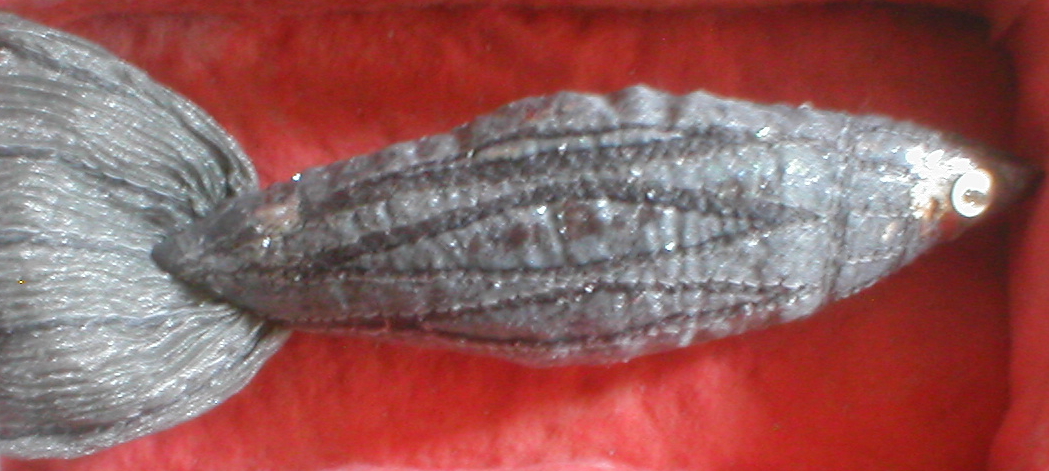
The fish is made in two pieces, from scraps of silver fabrics layered upon Kunin felt and overlaid with organza. The stitching goes through all the layers, and silver foil is applied (sparingly) on top. Finally the two pieces are stitched together round the edges and stuffed. The tail is made from crinkly metallic organza and caught between the two body pieces.
The tin is a fairly conventional box construction, with the extra difficulty of rounded corners. It is covered with stretchy metallic fabric (the stretch is necessary to negotiate the corners). The lining is made in two layers - a cotton fabric which is laced over card in the usual way, and painted felt which is stitched on top of the cotton without attempting to take it over the edge of the card.
 |
 |
 |
 |
I thought of embellishing the felt, either for the body of the fish or for the lining of the tin, but experiments showed that some of the fabrics which I wanted to use did not respond well to this treatment, so I abandoned the idea.
The lid of the tin is cut from aluminium sheet to the same template as the base, plus a flap which is sewn inside the tin under the lining. 1950s sardine tins were opened with a key which slotted over a tongue on the edge of the lid, and could be used to roll the lid back (in theory anyway - my recollection is that it often went wrong!) This arrangement was superseded by the arrival of the ring-pull and research suggests that you can't buy that kind of key any more. So I fabricated my own from wire.
The finished sardine in tin needed a base to stand on. After some trial and error I opted for a papier mache plate. This is made up of five layers - tissue paper, muslin, tissue paper, muslin, tissue paper - bonded together with coloured PVA. The grey colour is intended to make it look like a battered old tin plate. A suitable slogan is embroidered round the rim.